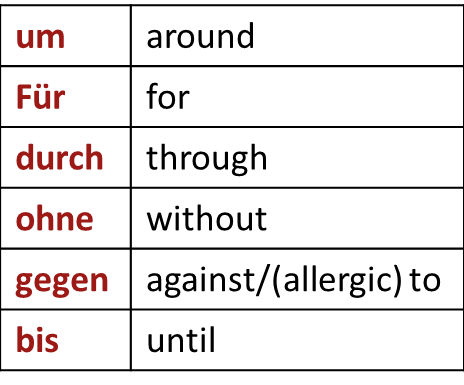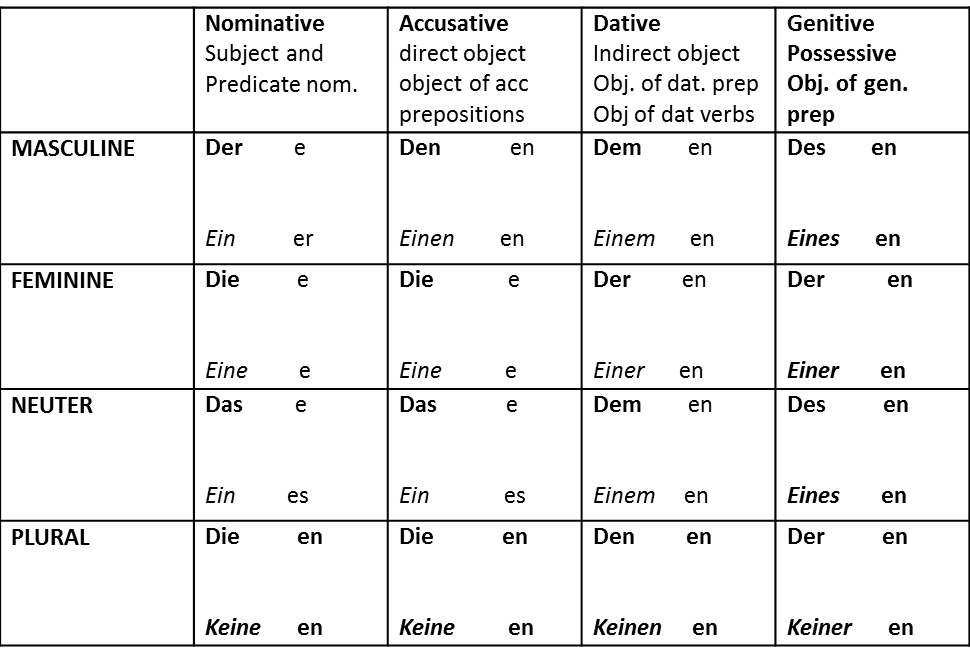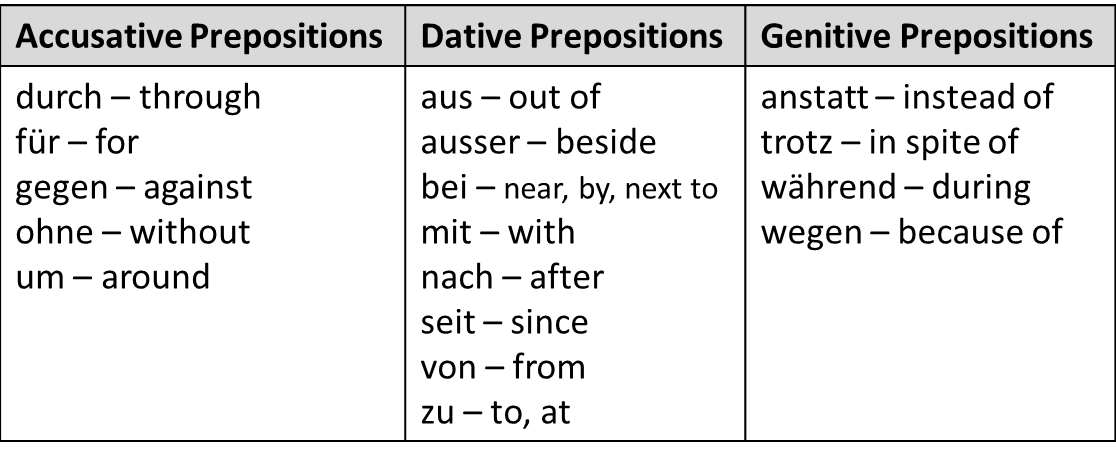Learn
|
Prepositions are words (or phrases) that show the relationship between two things. Prepositional phrases consist of a preposition and the noun or pronoun that follows it. (If you need more of a review on prepositions and prepositional phrases, see Lesson 1.04.) German prepositions fall into groups depending on which case is used following them. The group you are going to learn about in this lesson is called accusative prepositions because the noun or pronoun they precede is always in accusative form. In trying to find the correct German preposition for a sentence, it is extremely important to think of meaning. Consider an example in English. The word "on" in the sentences below is spelled the same, but each meaning is quite different: The book is on the table. Please be on time. Who was waiting on you at the corner? Who was waiting on you when you bought that? Is the light switch on? Since you translate meanings, not spellings, you should not expect to use the same German word for each of them. And, in reverse, you shouldn't expect a given German preposition to be translated the same way all the time. For example, the basic meaning of "gegen" is "against," but when used in "allergisch gegen" we would say "allergic to" in English. The German word "durch" normally means "through," but when talking about meat in a restaurant it means "well done" (i.e. cooked through). So be very careful with prepositions; they are the hardest words to translate because they have so many different meanings. Here, however, are the basic (most common) meanings of the accusative prepositions:
In the sentences below, note the change to accusative case for the article preceding the noun following an accusative preposition: (Remember the only thing that changes in accusative is the masculine) Der Junge geht durch das Haus. Der Mann spielt Tennis gegen seinen Freund. Die Frau kocht das Adbendessen für ihre Familie. THE CHART that you used in Lesson 7.06 will help you with accusative prepositions:
Bold - definite articles. Use the same endings for all der words (dieser, jeder, etc.)
|


